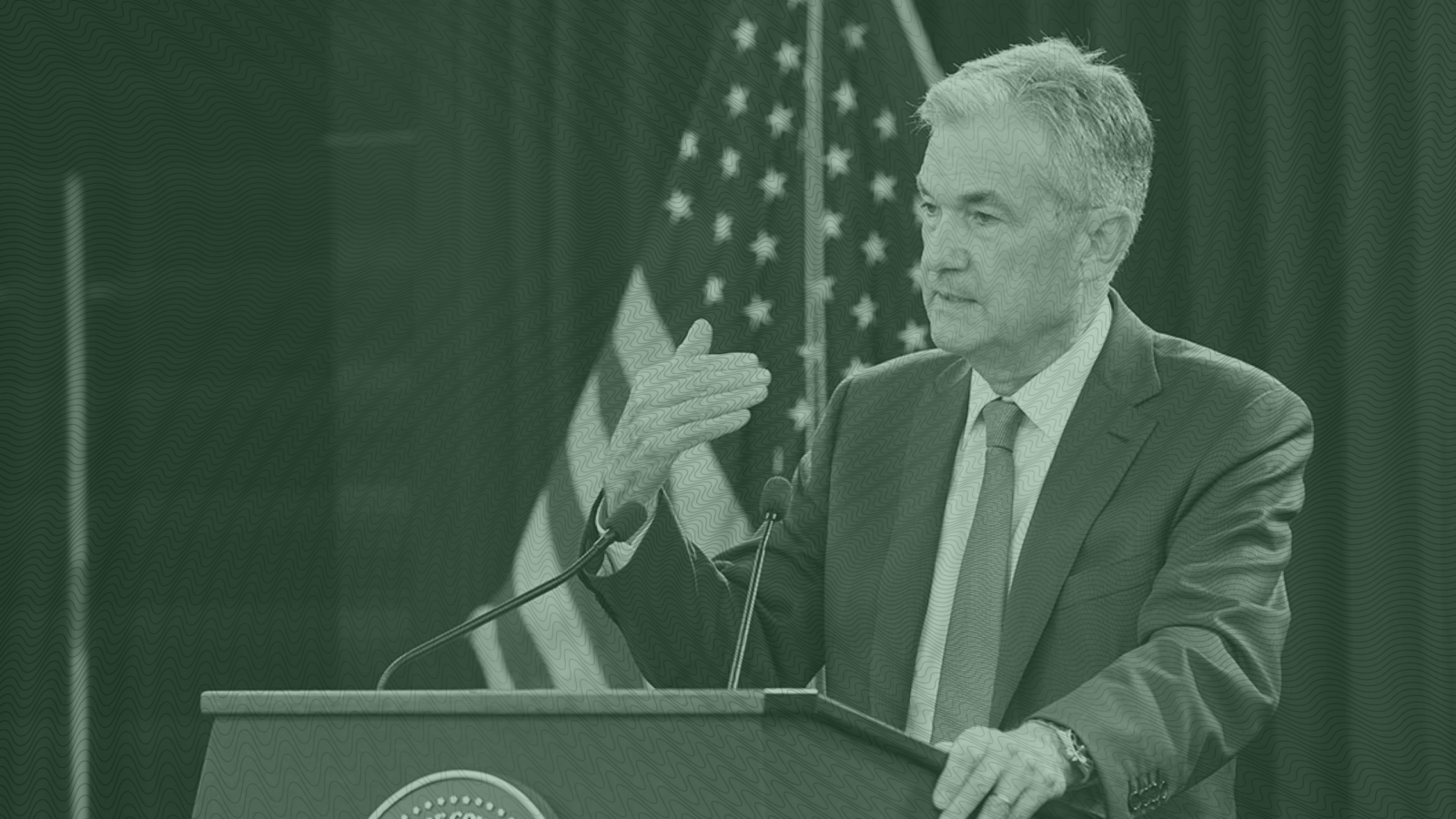Good morning.
The NFL may be getting too big for its cleats. The country’s premier sports association finally caved to private equity, voting to allow institutional investors to take minority stakes in individual franchises. Apparently, there aren’t enough buyers with the pockets to cover the Dallas Cowboys’ $10 billion price tag.
Private asset managers reportedly have “massive” interest in investing in pro football teams, and that could create the world’s most entertaining and watchable alternative investments. It also opens up the possibility for clients to sink assets into marquee dynasties like the Super Bowl Champion Kansas City Chiefs. Wait, that’s the one with Taylor Swift, right?
Advisors Key in on Fixed Income Ahead of Interest Rate Cuts

There’s nothing quite like the words “the time has come” to make cash trash again.
After Federal Reserve Chair Jerome Powell’s remarks at Jackson Hole on Friday, interest rate cuts are almost guaranteed to begin as soon as the next meeting in September. While that’s generally welcome news for advisors, not everyone is looking forward to Fed Day. Investors have enjoyed an almost unprecedented era of high-yield accounts, with some money-market funds offering annual percentage yields of up to 5.35%, according to Bankrate.
The pivot has some clients wondering what to do with their cash, besides clearing room under the bed. One area of opportunity is moving cash into short-duration fixed-income strategies, experts said. “We view the opportunity window for fixed income as wide open,” Helium Advisors co-head of wealth management JJ Feldman told The Daily Upside.
The Fix Is In
Exchange-traded funds that track the bond market have been catching the eye of advisors, including the Goldman Sachs Access Treasury 0-1 Year (GBIL) and JPMorgan Ultra-Short Income (JPST), Feldman added. There are approximately 720 bond ETFs traded on US markets with some $1.7 trillion in assets and an average expense ratio of just 35 basis points, according to an ETF data provider.
“There is a lag between a policy rate cut and the impact of that cut on market yields,” Feldman said. “We anticipate more volatility and more attractive risk-adjusted solutions for clients outside of cash.”
What’s the Alternative? Alternatives are another area that is quickly whetting advisors’ appetites: particularly fixed-income interval funds that can provide diversification and help portfolios weather market turbulence. They’ve also been getting a “good ride,” returning 8% to 12% in our current interest rate environment, according to Thao Truong, a wealth advisor with Morton Wealth.
“While they may seem more complex, alternative investments can often be more straightforward and not necessarily subject to those same [market] factors that are beyond our control,” Truong told The Daily Upside.
Assets in interval funds have grown almost 40% per year over the past decade to $80 billion through May 2024, according to Morningstar data. While interval funds can open up new strategies to investors, they can of course come with limitations, including liquidity. “The key here is to find a quality, well-disciplined, and experienced manager,” she said.
Ether ETFs Struggle to Impress in Opening Act
Sure, Ethereum ETFs were never going to blow past Bitcoin fund launches, but they haven’t lived up to analysts’ expectations ether.
The funds that track the second-largest cryptocurrency were off to the races in late July, vacuuming up $1 billion in assets on opening day. It was a promising curtain-opener that saw a handful break into the top 50 highest-traded debuts on record. Fast forward four weeks, and the funds are riding at least a nine-day losing streak, and have dropped $481 million in assets as a category since they began trading. After a promising start, ether ETFs are simply stuck in the ether.
“Our research was clear that there was limited demand,” Castle Funds president Peter Eberle told The Daily Upside, adding that institutions that invest are allotting just 1% to 3% of a total portfolio. “ETH and BTC are so highly correlated that an allocation to ETH brings very little benefit to a portfolio.”
Mine Your Own Business
The elephant in the room is the Grayscale Ethereum Trust (ETHE), which was converted into an ETF with a hefty 2.5% fee, and has since dropped $2.5 billion in assets as investors searched for cheaper products. Eight issuers including BlackRock, Invesco, and Fidelity Investments were among those that received the green light in July. Out of the top nine traded ether funds, all except ETHE have net positive inflows, including $1 billion into the iShares Ethereum Trust (ETHA) and almost $400 million into the Fidelity Ethereum Fund (FETH), according to SoSoValue data.
“It’s a bit more nuanced than: Investors are not digging Ethereum,” Brinker Capital Investments senior portfolio manager Nicholas Codola told The Daily Upside. “Most ETF providers would call getting nine figures in inflows in the first month a success.”
It’s a decidedly more upbeat picture than the headlines suggest, but still a hard sell for financial advisors. While more than 13% of advisors have discussed crypto or included it in portfolios when clients bring it up, only around 3% are actively recommending cryptocurrency to clients, according to a Cerulli report from July. More than half of the 1,500 advisors surveyed had no plans to use it at all.
Returns are Ethereal. If Bitcoin is considered the on-ramp to crypto, then Ethereum is a bet on blockchain’s future. It’s a proof-of-stake model, and largely seen as a way to invest in digital asset technology and the success of the crypto industry itself. Judging from recent research, cryptocurrency funds are thriving:
- Global crypto exchange-traded products hit a new record of almost $92 billion at the end of July, according to global research provider ETFGI.
- Crypto ETF assets have increased 506% from the start of this year, helped on by billions-of-dollar conversions from Grayscale’s Bitcoin and Ethereum products. Crypto products gathered almost $14 billion in assets globally in July alone.
Codola added that most of the US funds have more than $50 million in AUM, which is generally a good rule of thumb for a fund’s longevity. “Ethereum ETFs are here to stay,” he said.
Why Women Have Less Money Saved for Retirement than Men

There are differences between men and women, but having enough money to retire comfortably shouldn’t be one of them.
There’s a major gap in retirement funds between genders: Women have less than a third the median savings of men across all age groups, according to a Prudential survey in June. Unfortunately, that gap is not an anomaly but the result of other financial shortcomings. Even as women achieve higher levels of education and take on more leadership roles in organizations, they still face obstacles in areas like pay and financial literacy.
“When I’ve worked with couples, they often decide that only one of them will set aside funds for retirement, and often, the woman, or one of the women, will forego retirement savings,” Prudential financial planner Stephanie Sherman said, adding that the extra money supplements family-related expenses or caring for aging parents.
Claiming Inheritance
The great $84 trillion wealth transfer — when the Silent Generation and Baby Boomers pass savings and assets on to their children — is already underway, and over the next few years, women stand to inherit $9 trillion. But can that bridge the wealth gap? Not entirely.
“Despite this tsunami of wealth transfer, I believe a ‘confidence gap’ will still exist for women,” Allison Alexander, an advisor at Savant Wealth Management, told The Daily Upside. “It’s important to start at the beginning and help develop holistic financial plans that integrate their investment management with their tax and estate planning.”
Mind the Gap: On average, US women are paid 84% of what men make, according to the Department of Labor, so by default there’s less money to be saved. With that income hurdle in mind, studies have found that women have more skepticism for investing, too. Even for women who have solid financial literacy and income, retirement planning is complicated:
- Women often take on the role of primary caregiver to children and aging parents, and they’re nearly three times as likely to delay retirement due to that compared to men, the study found.
- Women also tend to outlive men, which sounds good on paper, but means their savings have to last longer. Many continue to work in some capacity after retirement.
Barbara Pierce, founder of Women With Capital, told The Daily Upside that divorce is another major factor in women having less money in retirement. She added that divorce can be a “powerful impetus to work on gaining confidence in investing.”
Extra Upside
- Drama, Drama. Investment Advisor is seeking legal advice after Bob Veres called out its new “Luminaries” awards for alleged conflicts.
- How Much? Berkshire Hathaway is the first US company outside of the tech sector to surpass $1 trillion in market value.
- Pick Up the Laundry. Advisors will soon have to start preparing for another layer of compliance: anti-money laundering programs.
Advisor Upside is edited by Sean Allocca. You can find him on LinkedIn.
Advisor Upside is a publication of The Daily Upside. For any questions or comments, feel free to contact us at advisor@thedailyupside.com.
